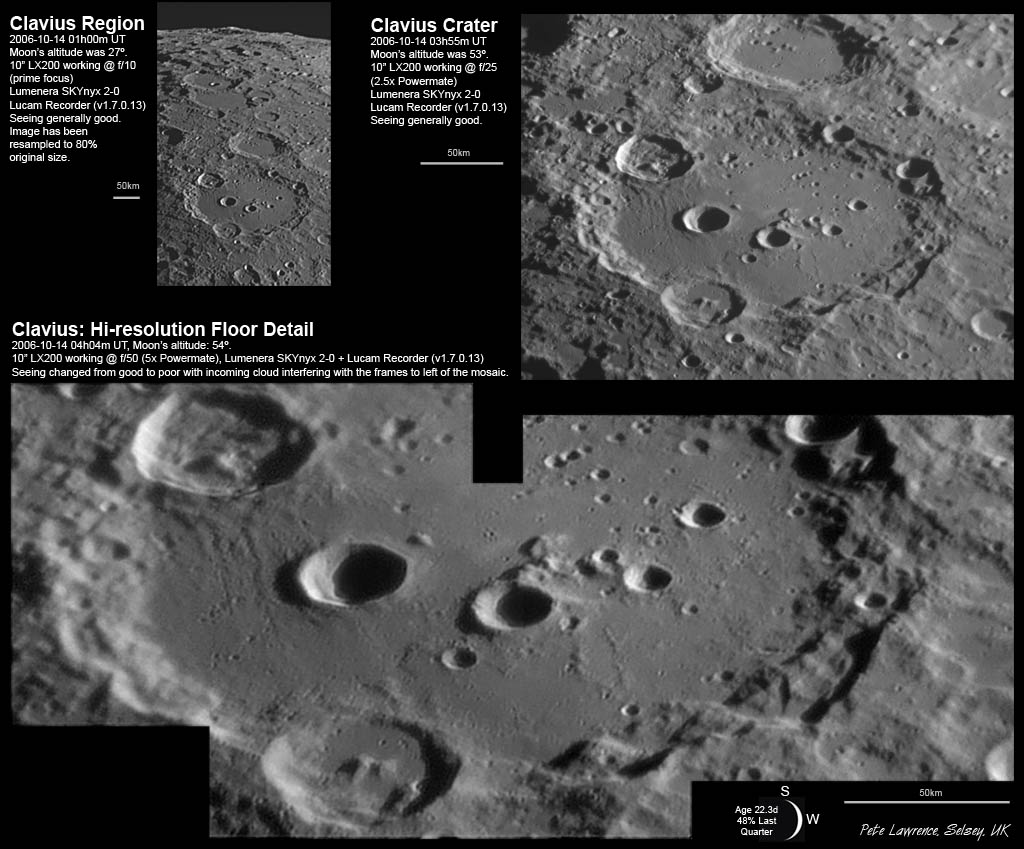
image by Pete Lawrence, Selsey, England
From 01h 00m UT until 04h 04m UT on Sept 14, Pete observed and imaged the Moon. Early in the evening when the Moon was low he captured the upper left view of the region from Clavius toward the south pole. Waiting for the Moon to rise higher he used a 2.5x barlow to get the upper right image at 03h55m. But the seeing was so good that he soon changed to a 5x barlow for a very high resolution view (bottom). The irregular shape of the large image shows that it is a mosaic of three frames, taken sequentially from right to left. And a close inspection shows that the sharpness declines in the same direction. Unfortunately, clouds rolled in during the sequence so the middle frame is somewhat degraded compared to the sharp right one, and the left is noticeably less sharp, having been taken through turbulent cloud. Not having been there it is easy to say: Gosh, take high res images when ever you can, even it the conditions should improve later. But in reality, I have too often dragged out my scope and sat it up only to find that clouds have crepted into what had seemed a clear sky only moments earlier. I like this sequence that Pete has put together because it illustrates a number of things. First, higher magnification definitely makes a difference in resolution. Second, seeing conditions really change fast - I should be grateful for every lunar image. Third, the layout with scale bars and age icon at bottom right is very pleasing. And fourth, a pairing of a regional view and a closeup would be a great plan for a new lunar atlas.
Technical Details:
September 14, 2006. 10″ LX200 @ f/50 (5x Powermate barlow) + Lumenera SKYnyx 2-0 + Lucam Recorder.
Related links:
Rükl sheet 72
Pete’s spectacular web site
Yesterday's LPOD: A Lunar Geologist is Born
Tomorrow's LPOD: A Hole in the Middle
COMMENTS?
Register, Log in, and join in the comments.



